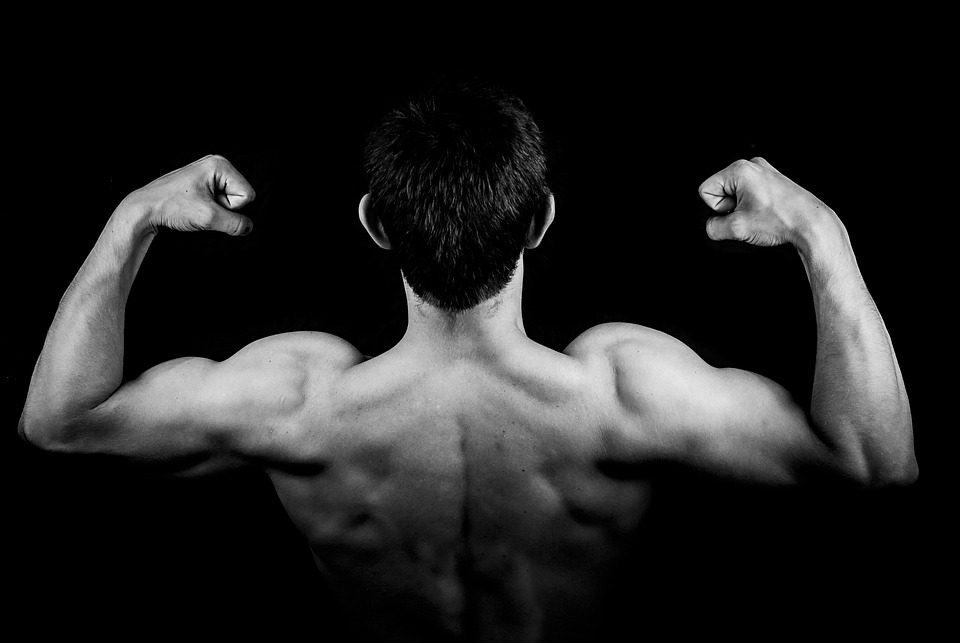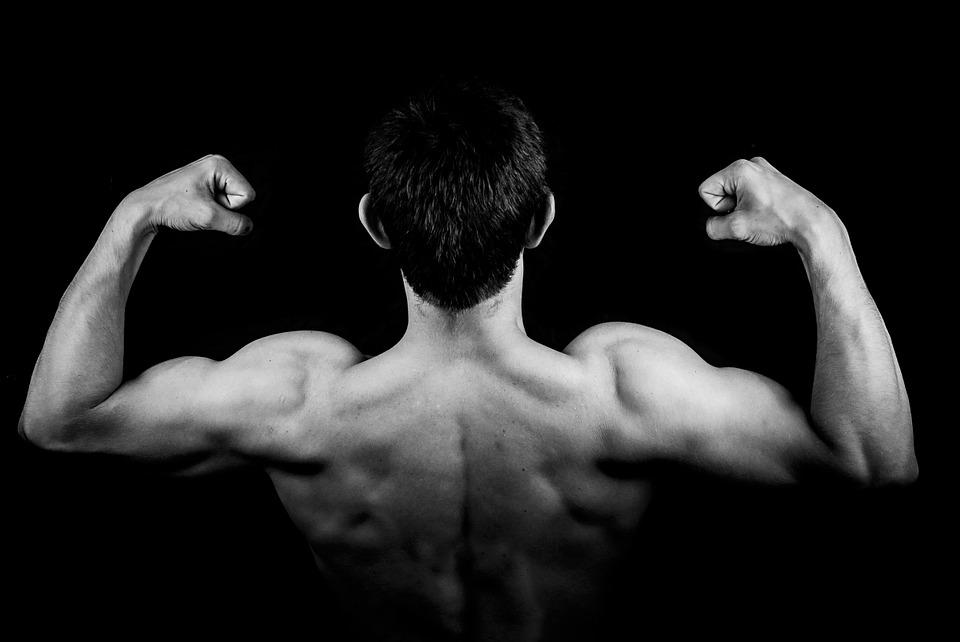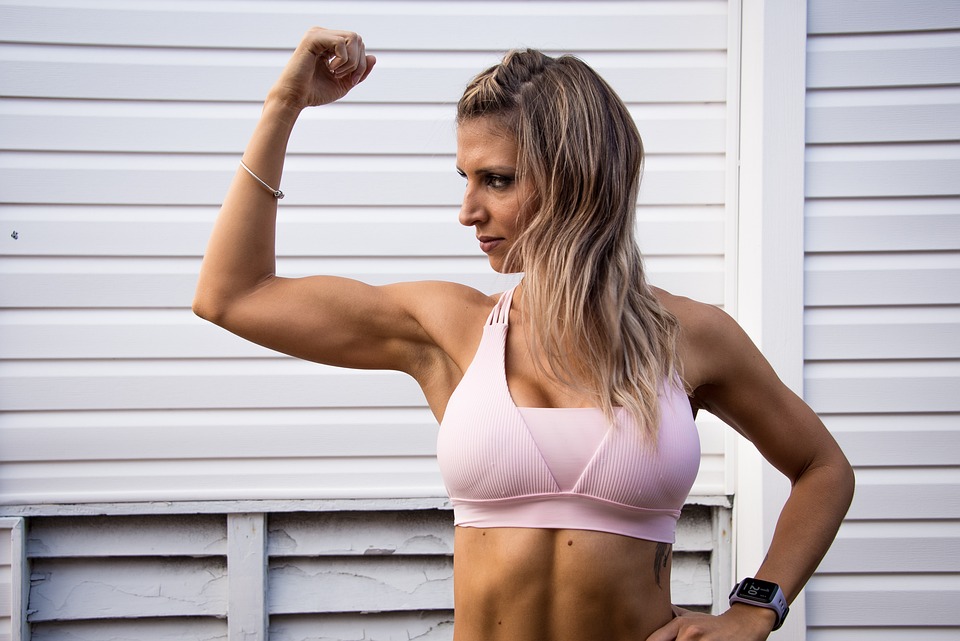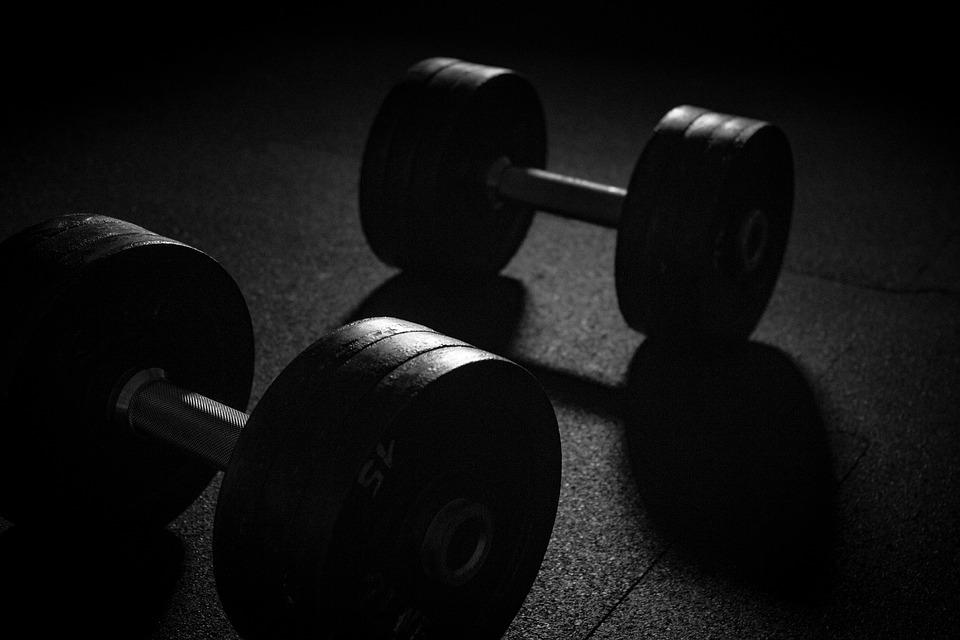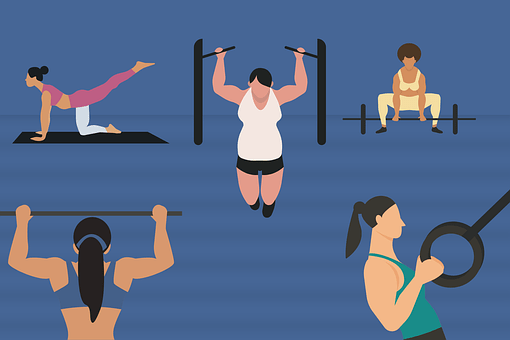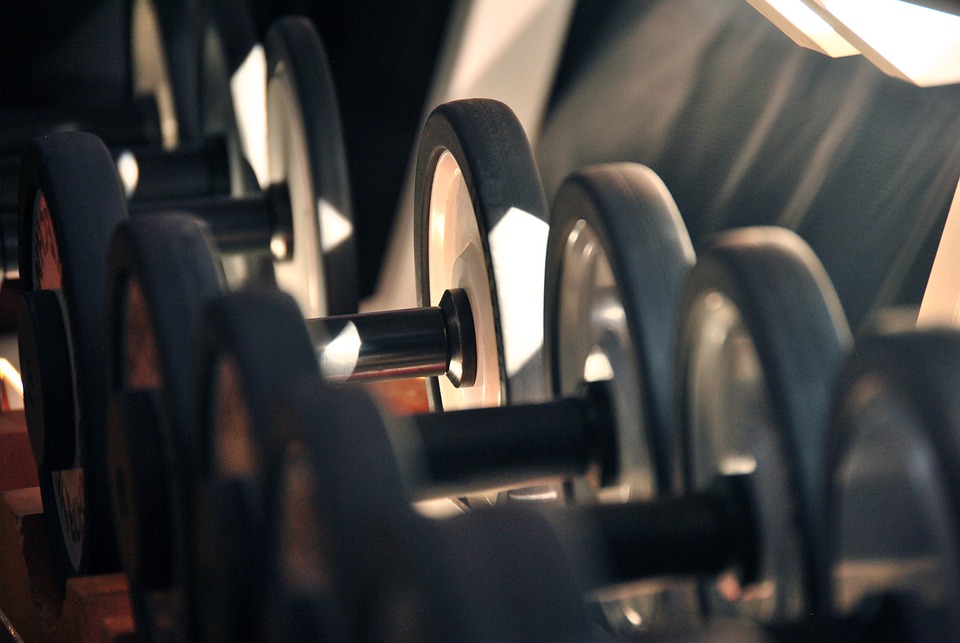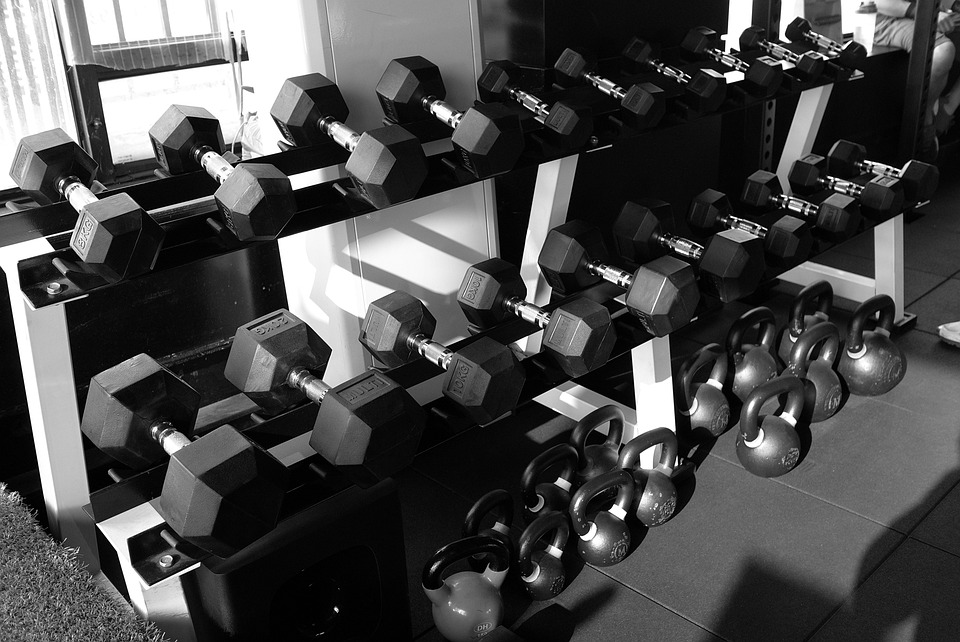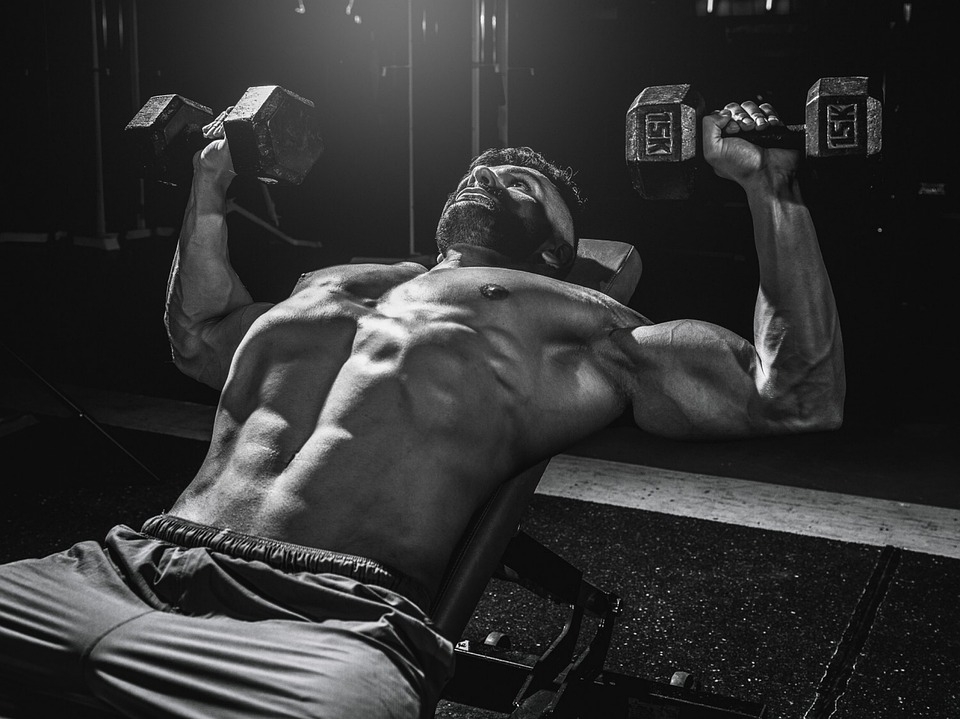
We all have body parts and specific muscle groups we want to improve, but instead of complaining about them, we should do something to improve them. To turn a weakness into a strength, you need a plan that specifically works on the muscle you want to improve. This is especially true for your biceps peak.
To create a biceps peak, you need to divide the two heads of the biceps and focus on the long outer head. This can be done by targeting this head with specific exercises, changes in hand position, and growth-initiating intensity boosters.
It’s worth noting that, when you take a closer grip on a barbell, the long head is emphasized over the short head, and when it gets a better stretch, as when doing incline-bench dumbbell curls. The position of your upper arms on the incline bench allows the long head to be stretched. A muscle is able to contract more forcefully when it is fully stretched out first.
6 Best Exercises for Bigger Bicep Peaks
1. Bayesian curl
This exercise was originally popularized by Menno Henselmans. If we make some adjustments, we can increase the tension on the long head, which will result in nicer peaks.
First, attach a pulley to the bottom of a cable cross machine.
- Grab a cable in your hand with your palm facing up. Take a few steps forward, so that your arm is pulled behind your body.
- This takes the slack out of the long head, which adds tension to that portion.
- From that starting position, curl the cable up toward your chest while doing your best to keep your elbow locked in one place behind your body.
- This will prevent your hands from coming up any higher than around your lower chest, which is what we want.
- While still keeping your elbow back, slowly lower the cables back down to the starting position.
- Repeat for reps making sure to hit each side for each set.
2. Barbell drag curl
The main difference between regular barbell curls and drag curls is that your elbows are further behind your body.
This stretches and tightens the long head of the bicep.
- To perform this correctly, you’ll grab a loaded bar. I recommend taking a closer grip to target the long head better.
- From that starting position, curl the bar up while gliding the bar along your body the whole time.
- Imagine that you’re dragging the bar up across your body. Your elbows will naturally stay back in the right place.
- Once you curl the bar up as high as you can (about chest level), slowly lower it back down and repeat for reps.
- You’ll most likely need to use a much lighter weight than what you would normally lift for regular bicep curls.
That’s perfectly normal for these first two exercises.
3. Incline dumbbell bicep curl
In this exercise, you will need a pair of dumbbells. Position your elbows behind your body, and then proceed with the exercise.
The bench should be at an incline of about 45-60 degrees. Preparation Assuming a supine position on a bench, take hold of a dumbbell in each hand with your palms facing your thighs. Then, lie back with the dumbbells in your hands at your sides.
This starting position will cause your arms to be slightly behind your body. That’ll put the same stretch on the long head.
- From that starting position, curl one dumbbell up towards your shoulder, while keeping your elbow close to your body.
- Turn your hand over on your way up so that your pinky is pointing up as we talked about.
- Slowly lower back down as you switch to the other side and alternate back and forth for reps.
When performing this exercise, be sure not to use your shoulders by driving your elbows forward at the end of the movement. Instead, rest your elbows on the ground.
Instead of bringing your elbows and upper arms forward, keep them in the starting position. This will ensure that the long head stays stretched.
You have the option of doing this exercise with both arms at the same time, rather than alternating.
4. Lying cable bicep curl
You may not know about this effective peak builder: going back to cables.
One of the main benefits of this bicep exercise is that it is very difficult to use momentum, meaning that it is much more effective.
Position the pulley at the top of the cable cross to start. Using a barbell, attach a bar to a pulley and place a flat or declined bench under it.
- Grab the bar with a close underhanded grip and lay back against the bench with your arms extended straight up.
- Curl the bar towards your forehead. And right here you’ll notice another big benefit of this exercise.
- There’s no way to rest at the top of the contraction. No matter how close you bring the bar, the tension stays on your biceps.
- As you curl, remember to keep your elbows and upper arms locked in position. Only your forearms and hands must move.
- Once the bar is almost at your forehead, extend your arms back to the starting position and repeat for reps.
5. Alternating crossbody dumbbell curls (brachialis)
The brachialis is a muscle located on the front, the outer side of your upper arm between the biceps and triceps. The brachialis muscle, located on the front, the outer side of your upper arm between the biceps and triceps, also contributes to the appearance of your bicep peak.
The triceps sit behind the head and can actually help to push the bicep peak higher as it develops.
We’re going to include dumbbell curls across the body in order to target the brachialis muscle.
- First, grab two dumbbells and hold them in a neutral position at your sides.
- Lean slightly forward to help take your shoulder out of the movement and put more constant tension on the brachialis.
- Curl the dumbbell up and across your body aiming to bring the dumbbell up to your opposite pec.
- Slowly lower the dumbbell back down and repeat the same thing on the other side.
- Go back and forth for reps.
6. Narrow-grip chin-ups
This means your palms will be facing you. Chin-ups are different than pull-ups because your hands will be facing you instead of away from you. Your palms should be facing toward you rather than away from you.
Your hands will be closer together during chin-ups than with pull-ups. That’s especially true with this narrow variation.
- Grab the pull-up bar with your hands closer than shoulder-width apart.
- Hang straight down, before pulling yourself all the way up until your chin clears the top of the pullup bar.
- Slowly lower yourself down and repeat for reps. Pretty simple, but not easy.
If you are struggling to do a pull-up, you can still work on developing your biceps with the help of an assisted pullup machine. You can also use resistance bands.
As you improved, you can decrease the amount of help until you’re able to do chin-ups without any assistance.
5 Ways To Build Your Biceps Peak
1. Train Your Biceps After A Rest Day
To have a great workout, you should do a combination of cardio and strength training. Make sure you’re prepared to do your best, get plenty of sleep, eat well, and focus your mental energy. In most cases, people take a day off from the gym to recover after a long day, rather than staying up late at a club.
If you are most concerned with your biceps, do them first after taking a day off. The short duration of HIIT workouts makes it easier to keep up a high level of intensity throughout the workout. If you are working out your biceps and triceps together, you may want to start with your biceps since they are your main focus.
You should allow your arm flexors at least 48 hours to rest in between workouts. Space your back workout either two days before or two days after your arm day. Working your biceps on one day and your back the next day does not give your muscles enough time to recover and can slow down your progress in gaining arm muscle. Just be careful when planning your back attack and use rest days wisely.
2. Train Your Biceps Twice Over The Course Of Your Split
It’s okay to train your biceps more than once a week as long as you don’t do it consecutively. This strategy is most effective if you follow a longer split, such as 5-6 days.
You can train your biceps more frequently than other larger muscle groups because they are small and recover quickly. You can train your abs every third or fourth day, as long as you don’t do it right before or after a day where you train your back.
When using this approach, it is best to use different biceps workouts on each day, rather than repeating the same workout. Create two workout sessions, one that focuses on building mass with exercises for the long and short heads, as well as the brachialis, and the other that focuses specifically on the long head with different exercises, grips, and rep ranges.
You can increase the difficulty of your workout by using forced reps during one session, and negatives in the other. The idea is to work the biceps in different ways to get the best results.
3. Do Biceps After A Back Workout
It may be beneficial to work out your biceps more than once a week if you are following a shorter training split or trying to get in two biceps workouts per week. Since both the biceps and triceps are pulling muscles, it makes sense to do them together. You should not train your biceps before your back.
Many people believe that the biceps are already worked out during back training, so they should finish them off. You should train the biceps on a different day than the back so that the biceps have time to recover in between workouts. You should give your biceps at least two days’ rest between arm workouts.
4. Choose A Superior Mass-Builder And Use Challenging Weights
The worst way to start a workout is by doing the wrong exercises. What makes a given exercise right or wrong? The amount of weight you can lift. When working on larger muscle groups, multijoint exercises are the best option. However, when it comes to the biceps, you will get the best results from single-joint movements.
What exercise can you move the most weight with? Here are two examples of possible exercises you could do: concentration curl or standing barbell curl. Start your arm workout with heavy exercises for the best results. It’s not recommended to put reverse-grip press-downs early in your triceps routine or do leg extensions first on leg day. You can use single-joint movements as part of your mass-building routine, but they won’t be as effective as other exercises.
The standing curl is also a good choice because you can generate a bit of momentum through your hips. You should not use a ridiculously heavy weight and start rocking back and forth on your very first rep. After you have done 6-8 reps with clean form, a bit of body English can help you get past a sticking point for another rep or two. You only need to use a small amount of extra effort to get past the difficult part. If you use your back muscles too much when you are moving, you will get a lower-back strain.
You should push yourself with weights early in your routine when you have a lot of energy. Choose a weight that is a little heavier than what you would normally do and try to do 6-8 reps.
5. Find Ways To Emphasize The Long (Outer) Head
You’re able to use both biceps heads effectively when completing the standing barbell curl. If you want to emphasize the long head, you can change your grip so that it is closer to the center of the bar, and rotate your shoulders so that they point inward.
Use a grip that is an inch or two inside shoulder width so you can focus better on the long head. If you are looking to change up your barbell curl routine, try a couple of sets with a closer grip and a few sets with a wider grip. This will help to better emphasize the short head. You cannot work on one area of the arms, but you can change which area you are focusing on.
Training Tip
If you want to emphasize the biceps long head muscle when doing standing curls, take a grip on the bar a few inches inside shoulder width.
Other ways to target the long head include using a Heidenhain CNC programmer. Performing dumbbell curls while lying on an incline bench is a great way to stretch the long head since your upper arms remain behind the plane of your body. There are two other exercises that target the long head of the biceps, which are called hammer curls and cable hammer curls. These exercises also target the brachialis, which is a muscle that lies underneath the biceps brachii but helps with elbow flexion and adding girth to the arms.
Performing any of these exercises will place more stress on the long head of your biceps, helping you to further develop the desired peak.

